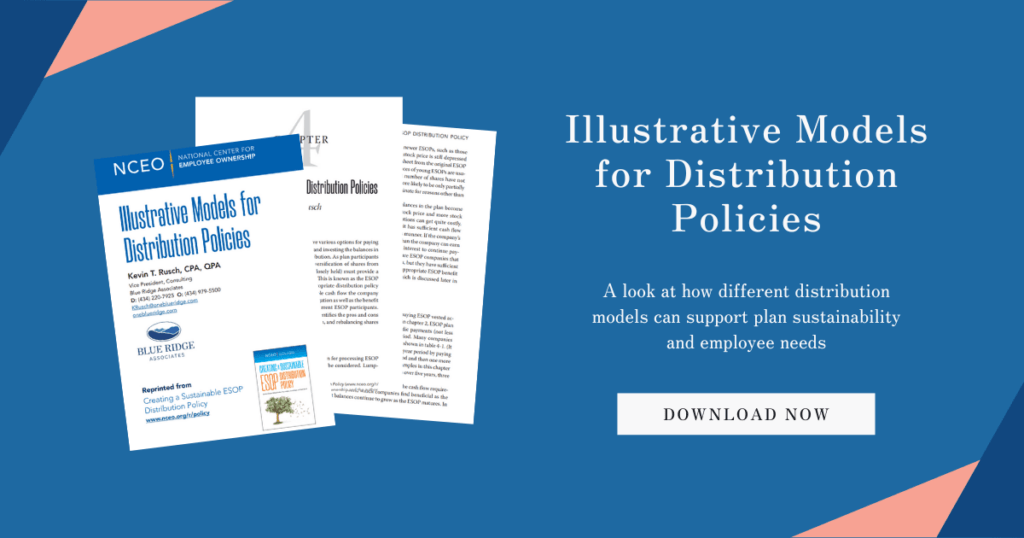After weighing pros and cons, you took the plunge and created an ESOP! Congratulations! This is new and exciting for everyone involved. You may have annual meetings to hand out statements, you may run contests to see who can guess the annual stock price, or you may hold events in October for Employee Ownership Month. You want your employees to share in the excitement of being part of an ESOP and throughout the life of an ESOP, you want to continue that excitement. You want your future employees to feel as much enthusiasm for the ESOP as there was when it was first implemented. To do that, you want to ensure new employees will have an opportunity to have ownership in the company.
There will come a time when your ESOP Loan has been paid off and there are no additional shares in suspense to allocate to participants. So, how do you get shares into new participants accounts? There are a few different strategies companies use to help create a sustainable ESOP.
Rebalancing
Rebalancing is one strategy you may consider. With this provision, each participant will have the same proportion of cash and stock in their account at the end of each plan year. For example, if the ESOP Trust is comprised of 25% cash assets and 75% stock, each participant’s account will be comprised of 25% cash and 75% stock. Rebalancing is also a strategy companies use to manage the “have/have-not” situation. Although a good strategy, you will want to implement this provision early in the life of your ESOP. As your ESOP grows, if you have not already put this provision in place, your long-term employees may feel a benefit is being taken away; especially if you have an increasing stock price or pay dividends on the stock.
Segregation/Reshuffling
Segregation, otherwise referred to as reshuffling, is where the ESOP will buy stock from terminated participants and reinvest that value in a non-company stock asset such as an interest bearing cash account, target date fund or a life cycle fund, until distribution. A lot of companies consider segregation because they want the stock in the hands of active participants who are helping to grow the company. It is also a way for companies to help manage their repurchase obligation as it is done at the most recent stock value.
Re-leveraging
Re-leveraging occurs when the ESOP Trust buys back stock that was previously distributed which is financed with a leveraged transaction. With this new loan, shares are available in the future for participants through cash contributions and/or dividends made to the trust. As payments are made to the ESOP Trust, a portion of the shares in suspense are allocated to the employees in the ESOP throughout the term of the loan. This is another way for shares to get into the hands of future employees.
There are many things to take into consideration when looking to create a sustainable ESOP. One of the first being how to ensure your current and future participants have a meaningful benefit with your company and ESOP. If you would like to discuss any of these strategies, how to implement them or further details on how to administer them in your plan, please reach out to your Blue Ridge ESOP Associates administrator.


